Anthropology
Related: About this forumThe Hohokam: Canal Masters of the American Southwest
By Paul Joseph De Mola, FRGS Wed, Jan 9, 2019
Before the arrival of the Spanish, a Native American culture of the American Southwest built a flourishing civilization with a sophisticated irrigation system that rivaled the ancient Roman aqueducts.
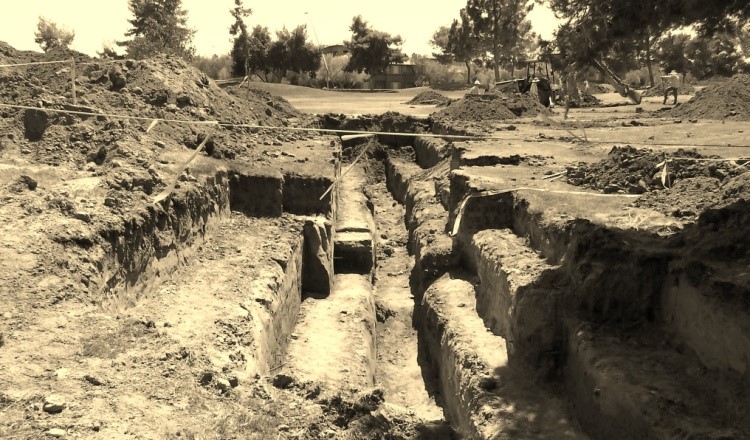
During the High Middle Ages, whilst Western Europe was still coping with the sociopolitical disorder and economic decline which had engulfed the continent since the fall of Rome, the Hohokam of the North American Southwest were reaching their pinnacle of economic prosperity and social organization (Brown 1988: 1-61; Smith 2004: 14). Interestingly, the Hohokam or ‘those who have gone before’ are not as well known as some of their contemporaries, such as the Pueblo III era Anasazi, the Aztecs and the late-Classic/Postclassic Maya (Justice 2002: 275; Milner 2009: 680; Webster and Evans 2009: 596). Nonetheless, the Hohokam were a productive and expansive culture, whose innovations influenced subsequent Native American and post-Columbian generations (Browman et al. 2009: 320; See also Smith 2004: 23-93).
Center to Hohokam culture was their technologically sophisticated canal engineering which was utilized to irrigate numerous sub-communities (Abbott 2000: 48). At its peak (c. AD 1150-1450), the Hohokam hydraulic system was the largest of the day and provided water (and consequently food) to tens of thousands of rural inhabitants, rivaling the excellence of the ancient Roman aqueducts — an urban engineering marvel (Medchill 2012, pers.comm.; Logan 2002: 31; cf Aicher 1995: 6). Moreover, through a vast array of human-made waterways, otherwise disunified subcultural ‘villages’ were integrated into a highly complex agricultural based society (Abbott 2000: 143; Abbott et al. 2003: 15). Thus, one may argue, that the increasing needs of an agrarian society was an incentive for the centralized management of inter-communal water facilitation, which in turn resulted in a closely knit farming society that was regionally unsurpassed in crop production (cf Milner 2009: 692, 694).
How is archaeological survey and excavation changing our understanding of Hohokam agriculture and irrigation? To answer this, I shall critically discuss several examples from both the Preclassic (c. AD 700-1150) and Classic (c. AD 1150-1450) Hohokam Periods. Specifically, I will draw from a host of archaeological subcategories such as botanical, hydrological and settlement patterns, with some perspectives coming from my recent fieldwork at the Riverview Archaeological Project.
Part I: The Dry Farmers
Evolving Cultigen Patterns
Research into the selection of agricultural crops may be a rather unique reflection of the evolution of Hohokam irrigation. For example, archaeobotanical evidence has revealed that cultigens, such as the legume tepary and the herb amaranth (Fig. 1), were popular with the Classic Hohokam especially during the Sacaton-Soho (Sedentary) transition phase (c. AD 1050-1150) (Browman et al. 2009: 320-321; Elson 1998: 7; Barnes and Breternitz 1988: 54). Other agricultural genera excavated from Classic Period contexts include cucurbita (squash) and P. vulgaris (common beans) (Foster 2012: 39; Kwiatkowski 2003: 50). This is in stark contrast to their more homogenous Preclassic taste for ‘traditional’ cultigens such as maize — a species found sparingly in Classic contexts but abundantly in Preclassic phases (Browman et al. 2009: 316; cf Foster 2012: 91). Some have explained this apparent disparity between Preclassic and Classic horticulture as indicative of archaeological bias from poor sampling techniques (See Browman et al. 2009: 316, 318).
More:
https://popular-archaeology.com/article/the-hohokam-canal-masters-of-the-american-southwest/
(Apologies for the age of the article. Just discovered this topic late this evening, hope to learn more.)
Judi Lynn
(160,545 posts)200 B.C. -- 1450 A.D
The Hohokam peoples occupied a wide area of south-central Arizona from roughly Flagstaff south to the Mexican border. They are thought to have originally migrated north out of Mexico around 300 BC to become the most skillful irrigation farmers the Southwest ever knew.
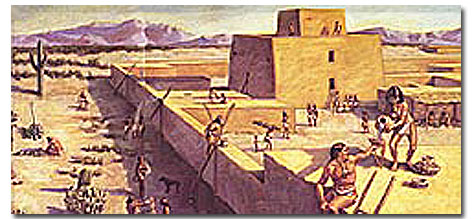
The ingenious Hohokam developed an elaborate irrigation network using only stone instruments and organized labor. Before modern development obliterated this system, their predecessors commonly referred to them as the Canal Builders.
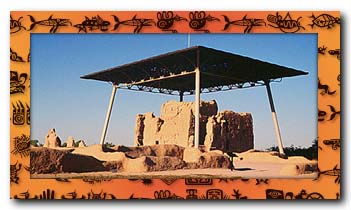
The Hohokam were creative artisans who became famous for their intricate work with shells obtained from the Gulf of California and the Pacific coast. They created a coiled pottery finished with a paddle and painted with red designs. They retained a great deal of Mesoamerican influence as can be seen in their use of ball courts and decorative feathers.
They also became entrepreneurs in a thriving trade with their neighbors, the Anasazi and the Mogollon. Their fate is unclear, but they seem to have disappeared from the archeological record between the first half of the 15th century and the time when the Spanish first came upon their descendents, Pima-speaking Indians still using the ancient irrigation techniques. Some of their original irrigation canals are still being used in the Phoenix area today!
Hohokam Archeological Sites
https://www.desertusa.com/ind1/du_peo_hoh.html
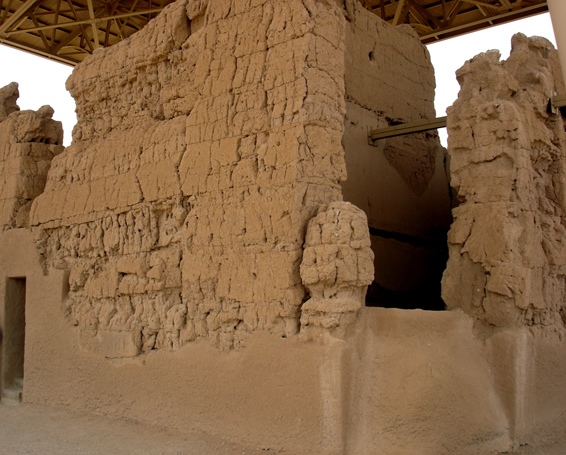

~ ~ ~
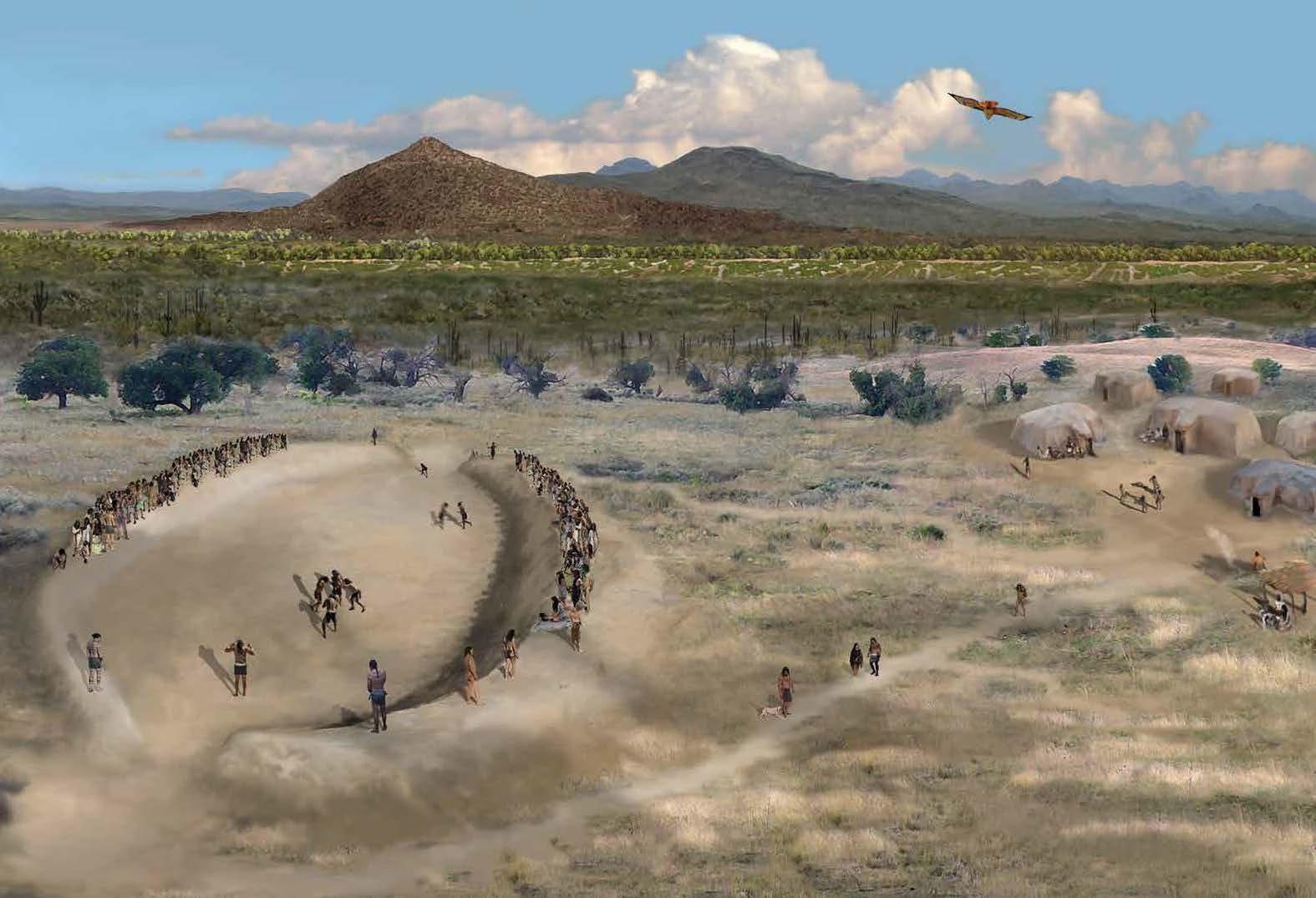
From American Archaeology MagazineCurrent Issue
The Mystery Of Hohokam Ballcourts
More than 200 ballcourts have been found in Arizona. For decades archaeologists have been trying to understand why they are there and what purpose they served.
Mar 15, 2018
Spring 2018: By Alexandra Witze.
From the Olmec to the Maya to the Aztec, ballgames were one of the defining activities of Mesoamerican cultures. Beginning some time before 1200 B.C., competitors kicked and whacked rubber balls up and down a playing court. These ballgames were rich in symbolism—in some cases the gods were said to have played—and a powerful force that bound communities together. But it’s possible these games weren’t limited to Mesoamerica. Archaeologists have found more than 200 oval-shaped earthen depressions with embankments in central and southern Arizona that resemble the Mesoamerican ballcourts. These features date between roughly A.D. 750 and 1200 and are associated with the Hohokam culture.
Though archaeologists continue to debate their purpose, and ethnographic accounts are silent on this matter, most researchers now surmise that the Hohokam courts were used for ballgames, much as the Mesoamerican ones were, according to Henry Wallace, a senior research archaeologist with Desert Archaeology, Inc., in Tucson, Arizona. In doing so the courts played a major role in strengthening Hohokam identity and interactions among villages. “Whenever you have games, you have people coming together,” Wallace said. “It’s a great way of linking social groups.”
New research suggests that the Hohokam ballcourts could have spread as part of a burgeoning religious revitalization movement. Villagers may have picked up on the Mesoamerican style of playing and adapted it to their own purposes. In some locations, such as Pueblo Grande in Phoenix, Hohokam ballcourts are large, intact ovals surrounded by earthen embankments. In other places they have been eroded, buried, or destroyed. According to a database maintained by Andy Laurenzi at Archaeology Southwest in Tucson, there are at least 220 ballcourts at 181 sites across Arizona. Most sites have one ballcourt, although several have more than one, including the well-studied site of Snaketown along the Gila River, which has both a large and a small court.
https://www.archaeologicalconservancy.org/the-mystery-of-hohokam-ballcourts/
~ ~ ~
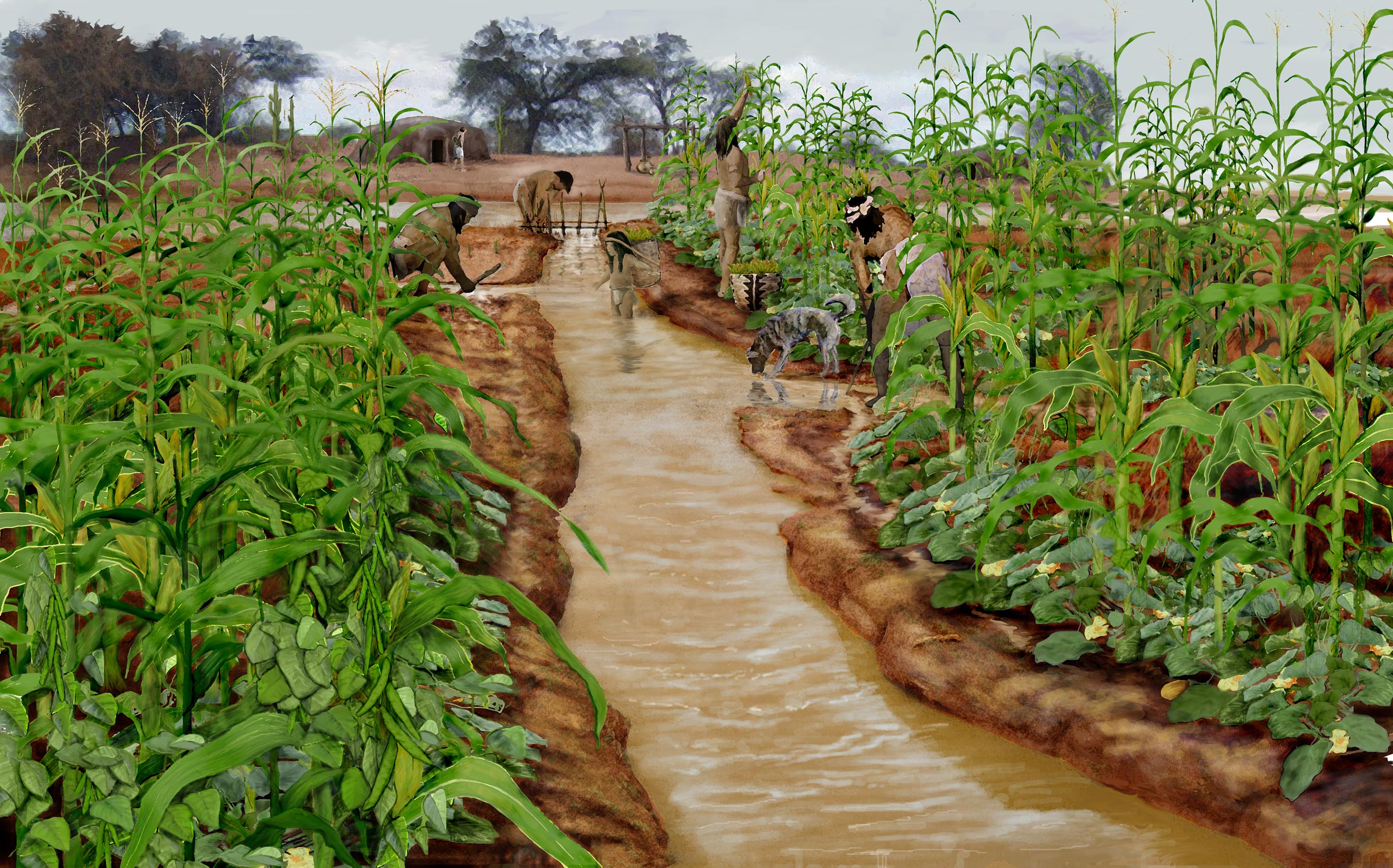
haven't seen the name Andy Laurenzi in a few years. he used to be with TNC. oh and that was even from 2018. wonder if he is still with Archaeology Southwest? don't see him listed.